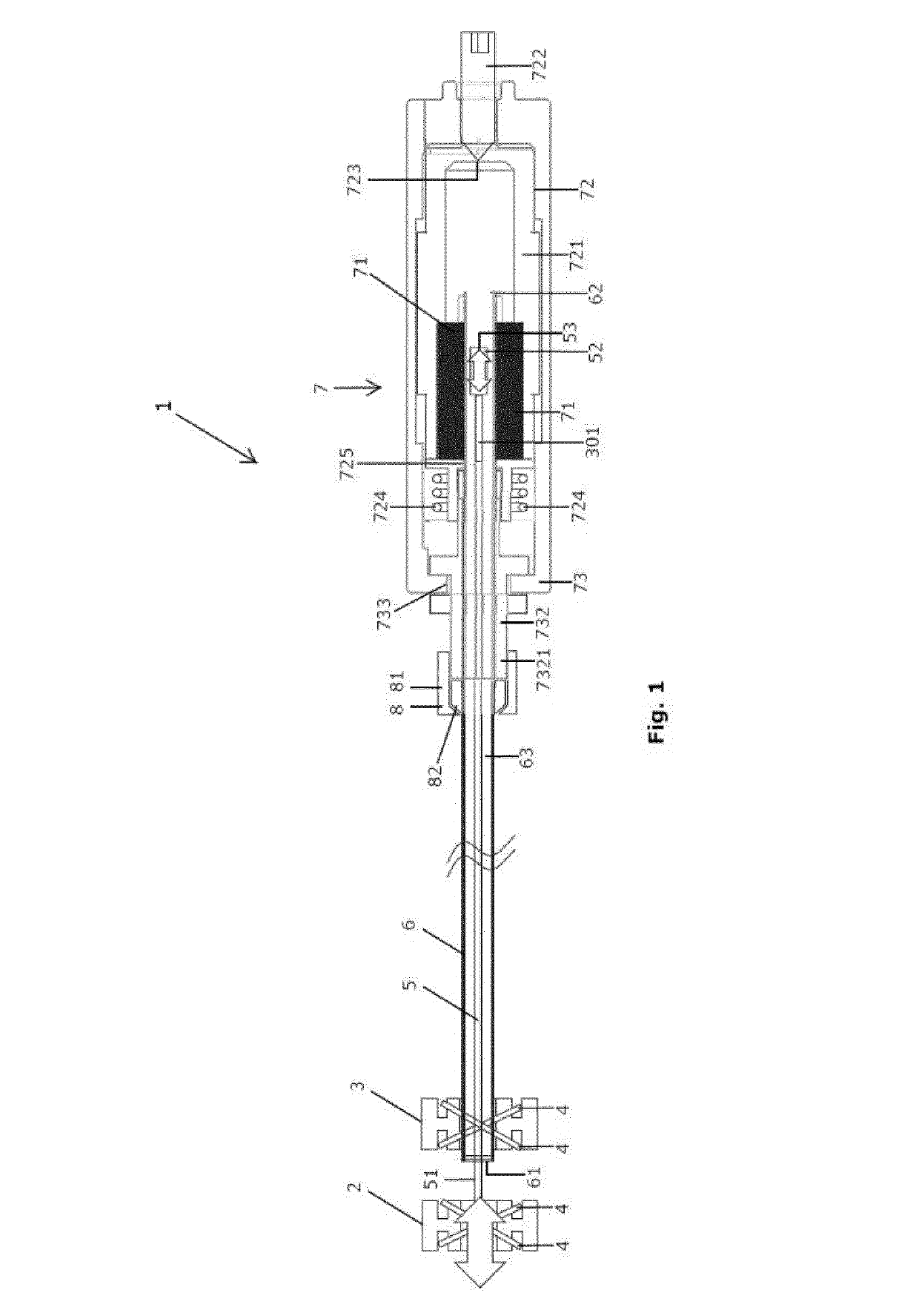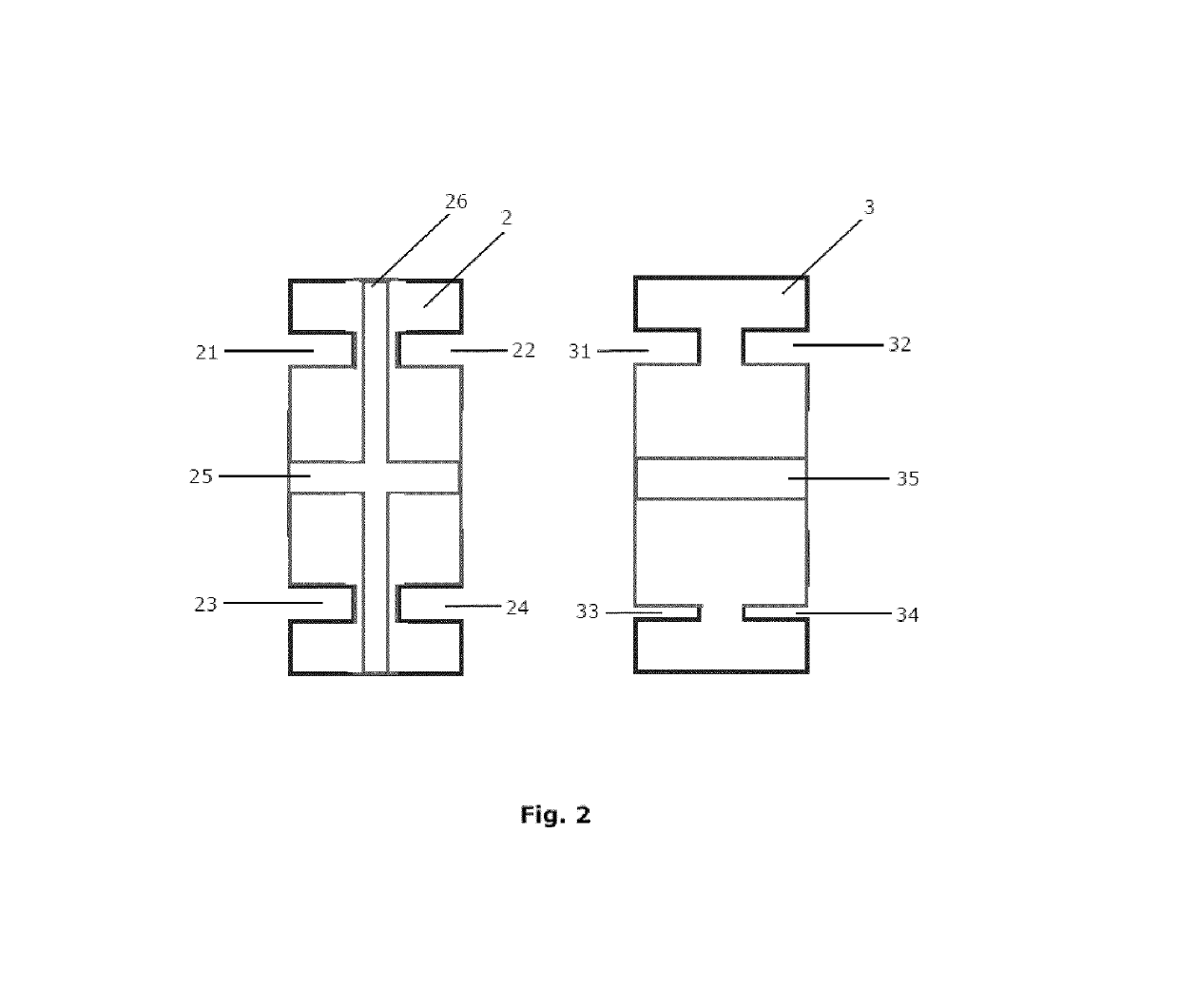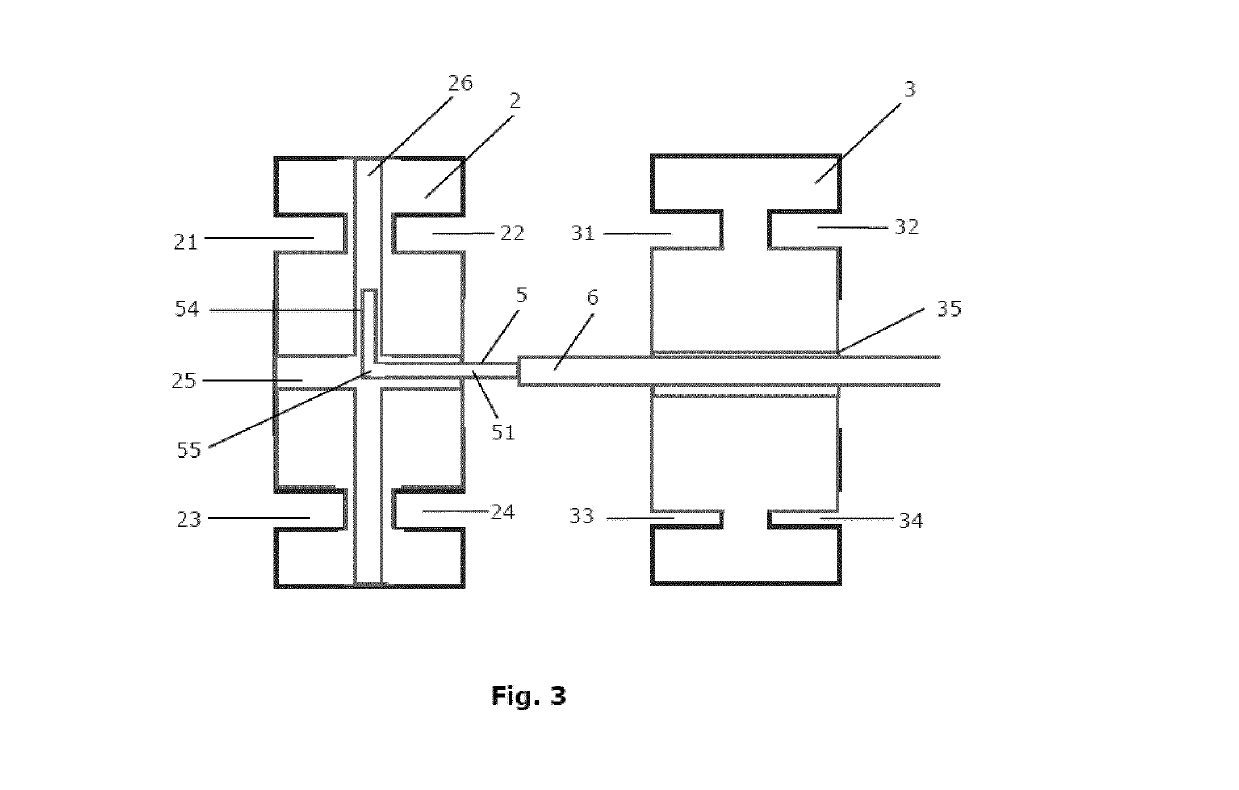Integrated Ligament Strain Measurement
a technology of integrated ligaments and strains, applied in the field of medical/surgical devices, systems and methods, can solve the problems that existing techniques often don't correlate with the patient body's own sensing mechanism, and achieve the effects of reducing wear, increasing durability, and increasing functional performan
- Summary
- Abstract
- Description
- Claims
- Application Information
AI Technical Summary
Benefits of technology
Problems solved by technology
Method used
Image
Examples
first embodiment
Example 1: First Embodiment According to the Present Invention
[0220]FIG. 1 shows a first embodiment according to the present invention. Particularly, the figure shows a device 1 suitable for measuring the difference between a strain in a ligament at a first point in time and said strain at a second point in time. A first ligament-retaining element 2 and a second ligament-retaining element 3 have a shape and dimensions suitable for being fastened on said ligament close to each other.
[0221]Specifically, FIG. 1 shows the front of said first ligament-retaining element. Said first ligament-retaining element has a front width of about 4 mm along a width direction essentially parallel to the wire. Said first ligament-retaining element has a front height of about 10 mm along a height direction essentially perpendicular to said width direction. Said first ligament-retaining element has a depth of about 2 mm along a depth direction (not shown on FIG. 1) essentially perpendicular to said width...
second embodiment
Example 2: Second Embodiment According to the Present Invention
[0230]The second embodiment according to the present invention is illustrated in FIGS. 2 and 3. Both figures show a second embodiment of said first and second ligament-retaining element 2 and 3, respectively. Similar as in the first embodiment, to facilitate gluing of the outer end of said distal wire portion 51 to said first ligament-retaining element 2, said first ligament-retaining element 2 comprises a first groove 25 along a width direction.
[0231]Similar as in the first embodiment, to facilitate gluing of said distal end 61 to said second ligament-retaining element 3, said second ligament-retaining element 3 comprises a second groove 35 along said width direction. In an alternative embodiment (not shown in the figures), the second ligament-retaining element does not comprise a second groove 35 but instead a hole to facilitate gluing of said distal end 61 to said second ligament-retaining element 3. Hereby, said hole...
third embodiment
Example 3: Third Embodiment According to the Present Invention
[0234]The third embodiment according to the present invention is illustrated in FIGS. 4 and 5. It shows the same inner housing 72 and outer housing 73 as in the first embodiment, yet disassembled instead of assembled.
PUM
 Login to View More
Login to View More Abstract
Description
Claims
Application Information
 Login to View More
Login to View More - R&D
- Intellectual Property
- Life Sciences
- Materials
- Tech Scout
- Unparalleled Data Quality
- Higher Quality Content
- 60% Fewer Hallucinations
Browse by: Latest US Patents, China's latest patents, Technical Efficacy Thesaurus, Application Domain, Technology Topic, Popular Technical Reports.
© 2025 PatSnap. All rights reserved.Legal|Privacy policy|Modern Slavery Act Transparency Statement|Sitemap|About US| Contact US: help@patsnap.com



